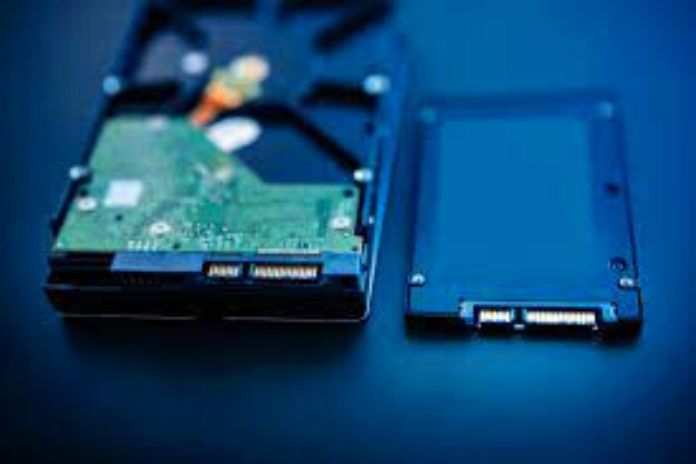Recover Data After Formatting Hard Drives And SSDs

Step-by-step instructions to recover data from arranged hard drives and SSDs: things to be aware of and the best applications to continue. Organizing a campaign has forever been viewed as long-lasting and irreversible. Imagine a scenario in which you understood you’d designed a hard drive or SSD that contained information you don’t have a duplicate of.
We spare you the typical bragging about the significance of reinforcements: it is clear that safeguarding information with a successful reinforcement strategy is fundamental to try not to run chances and respond splendidly to any IT occurrence.
What we ask ourselves with this article is, most importantly, in which circumstances it is feasible to reestablish information from a designed hard circle or SSD and afterward propose probably the best applications for document recuperation
What Happens With Formatting Hard Drives And SSDs
When it comes to formatting, it is good to make a distinction between quick format and full format. As we have seen in the article where we talk about the difference between quick format and full format, when you request a short format, the contents of the allocation table, which contains the attributes of all the files kept in the drive, are erased.
This way, if you lose information about the data stored in the storage unit, it will be inaccessible, and the team will appear empty. However, the data will still be stored, and after a quick format of the drive, it will simply be recoverable using data recovery software.
If you realize that you have formatted a drive by mistake, you must immediately stop using that drive to prevent the system from overwriting sectors that may contain the data you would like to recover. The data recovery attempt should be made as soon as possible. Complete formatting scans the drive for bad areas since Windows Vista applies a set of “zeros” to all sectors. This makes data recovery virtually impossible.
When Data Is Not Recoverable
We said that with the full format, data recovery is, in fact, impracticable, while the deleted data can be restored after a quick form. In the case of solid-state drives, we have seen how the technologies that make SSDs work faster. We have said that the garbage collector is a mechanism that signals “erasable” information that the user or the operating system has requested to delete.
The TRIM command works “in tandem” with the garbage collector and tells the drive’s ATA interface, which blocks to remove. If the TRIM command did not exist, the SSD unit could not know that some areas contain information that can be eliminated until the system communicates to write new data in the same places. The drive would have to erase the existing knowledge and then register the details taking longer than the simple write operation.
The logic with which each SSD responds to the TRIM command is set at the firmware level: this decides the best moment to complete the data removal. Therefore, some data can remain stored in the unit for more or less long. This is why even with SSDs, it is essential to act now.
In any case, the TRIM command takes advantage of the drive’s idle moments to indicate the data blocks that can be removed and minimize wear on them. The deleted data is also not recoverable in case of physical damage to the drive. For storage media, you are still determining whether it will work properly. You should create a “sector-by-sector” image to initiate data recovery without damaging the drive.
How To Recover Data From Formatted Hard Drives And SSDs
The system hosting the formatted drive from which you wish to recover data should be shut down immediately. Using another system, you should install data recovery software in which you will attempt to restore files from the formatted drive. The formatted hard disk or SSD should then be connected to this system.
Many data recovery programs allow you to generate bootable media that can be used to initiate an attempt to recover lost information. To recover data from formatted hard drives and SSDs, you can try PhotoRec, free and open-source software that allows you to analyze any storage medium, including formatted ones, in Search of recoverable data.
Formatted Drive
In the case of a formatted drive, you will have to select it from the main drop-down menu and then choose Whole disk. PhotoRec will recover all the present data by selecting the Complete option and specifying the destination folder. To use PhotoRec, download this compressed archive, extract its contents, then double-click on the qphotorec_win.exe file to start the version of the program equipped with a graphical interface.
Another program that facilitates the recovery of data from formatted drives is Disk Drill: select the movement of interest, then click on Search for lost data at the bottom right. By default, Disk Drill uses all the recovery methods to find the most significant amount of still intact data.
Disk Drill’s main peculiarity is the possibility of immediately extracting the recovered files as the scan proceeds. You can then retrieve the files of interest as soon as they appear in the list. Disk Drill also divides the items by type ( Images, Videos, Audio, Documents, Archives, Other ) to simplify their identification. Unfortunately, the Italian translation of the Disk Drill interface still leaves something to be desired with many (too many) abbreviations that sometimes take time to understand.
Stellar Data Recovery Is Among the Best:
the accessible version of the program has the limit of not allowing the recovery of more than 1 GB of lost or deleted data. For some users who want to recover files that are not too heavy such as documents or image sets, 1GB is more than enough. For all other Stellar, it allows, in any case, to control which files and folders are recoverable.
A real “champion” for data recovery is R-Undelete which, for personal purposes only, does not impose any limitation, in the free version, exclusively for data recovery from units formatted with the FAT file system (for example storage media used in photo and video management devices). Among other software, we mention EaseUS Data Recovery Wizard, which in the free release allows you to recover up to 2 GB of data even from previously formatted units.
Read Also: Battery drains fast with Android






